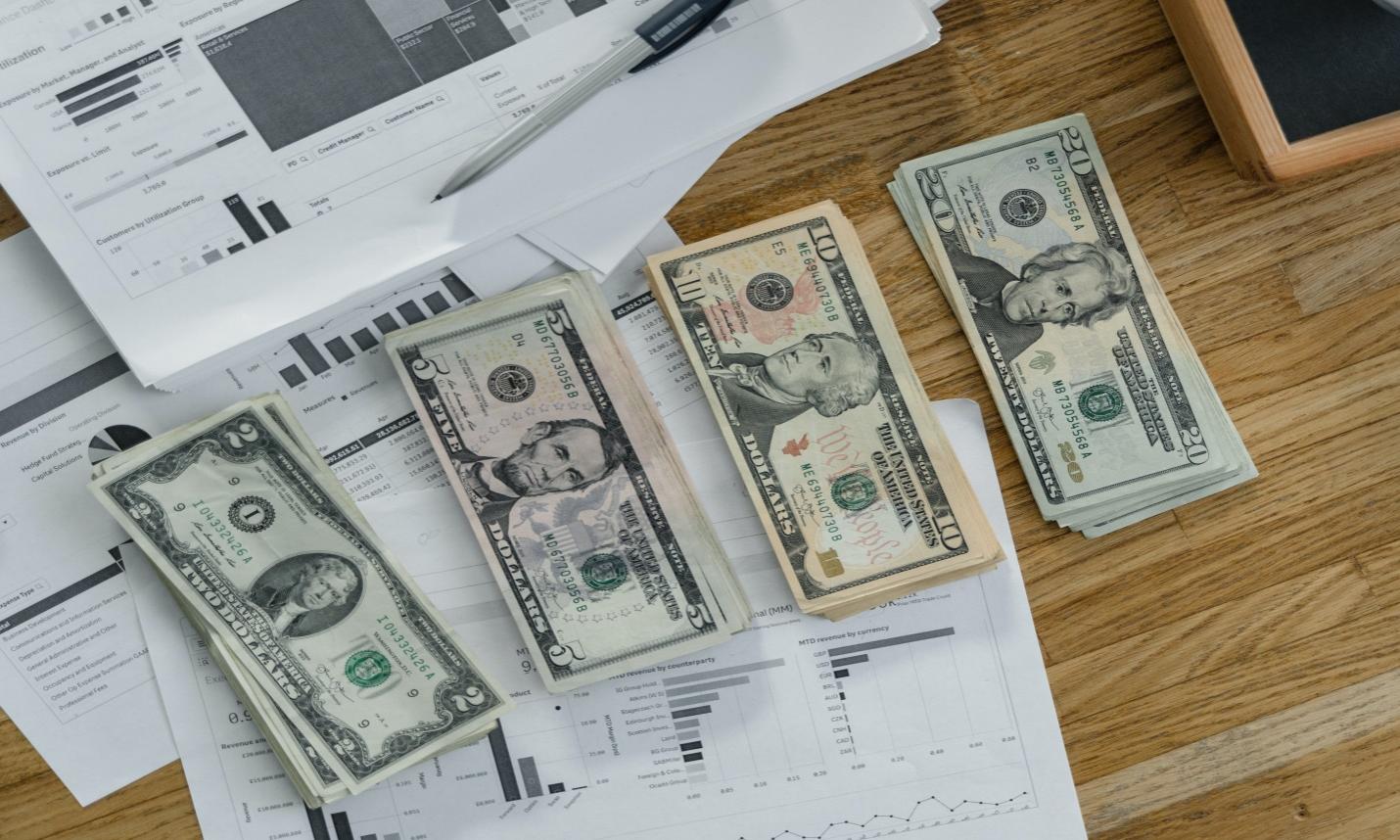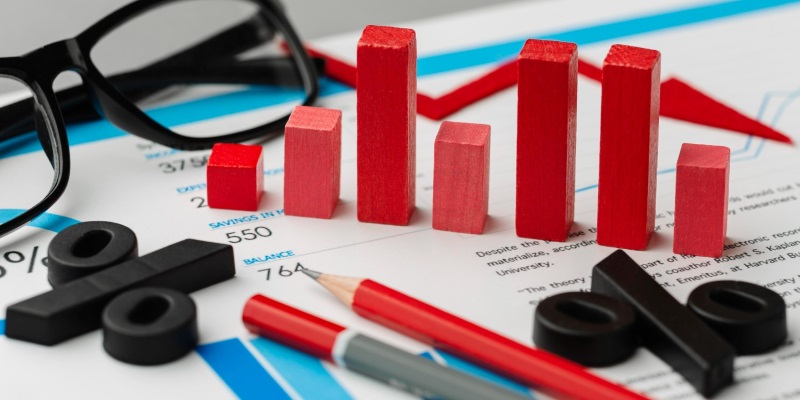Understanding Amortization vs. Depreciation: How They Work
Nov 27, 2023 By Triston Martin
Advertisement
Amortization and depreciation may sound like complex financial terms, but fear not! We're here to break them down into plain, understandable language. Imagine you buy a car or a piece of machinery for your business. These two concepts come into play to help you account for the wear and tear on these assets over time.
So, let's dive into the world of amortization and depreciation and uncover their differences and workings.
Amortization Explained
Amortization is like the gradual fading of an asset's value over time. Think of it as spreading the cost of something over its useful life. This makes it easier to account for expenses and manage your finances. A common example is a mortgage.
When you take out a loan to buy a house, you make regular payments that cover both the principal amount (the initial loan) and the interest (the cost of borrowing money). These payments are spread out over many years, which is amortization in action.
Here's a simplified breakdown of how it functions:
Useful Life: Imagine you buy something valuable for your business, like software or a trademark. Amortization begins by estimating how long this asset will be useful to you. For instance, if you purchase software that you expect to benefit your business for five years, you'll spread its cost over that time frame.
Even Payments: Amortization involves making equal payments at regular intervals. These payments cover both the principal (the original cost of the asset) and the interest (the cost of borrowing, if applicable). By doing this, you ensure that you're gradually paying off the debt while maintaining financial stability.
Accrual Basis: Many businesses use the accrual basis of accounting, which means they record expenses when they occur, not necessarily when cash changes hands. Amortization aligns perfectly with this accounting method, as it allows companies to recognize the expense of an asset over its useful life, regardless of when the initial purchase was made.
Non-Physical Assets: Amortization primarily applies to non-physical assets, such as patents, copyrights, and intangible assets. These assets don't have a physical presence, but they hold significant value for a business. Amortization helps allocate the cost of these intangible assets over the period they're expected to provide benefits.
Depreciation Demystified
Depreciation, on the other hand, is all about tangible assets losing value over time. Imagine you own a pizza oven in your pizzeria. As it ages, its efficiency and value decline. Depreciation helps you account for this decline in value. Here's how it works:
Wear and Tear: Depreciation considers the wear and tear, obsolescence, or deterioration of physical assets. It acknowledges that assets like machinery, vehicles, or buildings will not last forever.
Decreasing Book Value: Unlike amortization, where you're paying off a debt, depreciation focuses on reducing the book value of an asset. It's like acknowledging that your pizza oven is worth less each year.
Different Methods: There are various methods of calculating depreciation, such as straight-line depreciation, declining balance depreciation, or units-of-production depreciation. Each method has its way of spreading out the cost reduction over time.
Matching Principle: Depreciation is crucial for adhering to the matching principle in accounting. This principle ensures that the expenses related to an asset are recognized in the same period as the revenue it generates. In other words, it helps maintain a balanced financial picture.
Key Differences Between Amortization and Depreciation
Now that we've looked at both amortization and depreciation individually let's compare them side by side:
Certainly, here are the key differences between amortization and depreciation presented in short paragraphs:
Nature of Assets
Amortization primarily applies to intangible assets such as patents, copyrights, and trademarks. In contrast, depreciation is used for tangible assets like machinery, buildings, and vehicles.
Payment vs. Value Reduction

Amortization involves making scheduled payments to cover the cost of an asset over its useful life. In contrast, depreciation focuses on reducing the book value of an asset to reflect its declining worth over time.
Methods
Amortization typically follows a straightforward approach, evenly spreading payments over time. Depreciation offers various methods, including straight-line, declining balance, or units-of-production, tailored to the nature of the asset.
Accounting Principle

Amortization aligns with the accrual basis of accounting, recognizing expenses as they occur, regardless of when cash changes hands. Depreciation is crucial for adhering to the matching principle, ensuring that expenses are matched with revenue in the same accounting period.
Examples
Amortization is commonly seen in scenarios like mortgage loans, where payments include both principal and interest, gradually paying off the debt. Depreciation is applied to tangible assets like vehicles, machinery, or real estate to account for their declining value as they age and are used.
How They Work Together
In some cases, amortization and depreciation can intersect. Let's say you own a business with a trademarked logo, and you also have a delivery truck. Here's how these two concepts can work together:
Separate Accounts: You maintain separate accounts for the trademark (amortization) and the delivery truck (depreciation) because they're different types of assets.
Different Schedules: The trademark might have a longer estimated useful life than the delivery truck. You'll use different schedules to account for their costs over time.
Impact on Financial Statements: Amortization and depreciation affect your income statement and balance sheet differently. Depreciation will directly impact your expenses, reducing your profit, while amortization will reflect as an expense, too, but for intangible assets.
Tax Implications: Both concepts can have tax implications. Some jurisdictions allow businesses to deduct depreciation expenses from their taxable income, reducing their tax liability. Similarly, amortization of certain intangible assets can also lead to tax benefits.
Financial Planning: Understanding how these concepts work together helps with financial planning. You can anticipate when certain assets will need replacement or upgrades, ensuring your business remains efficient.
Conclusion
Amortization and depreciation might have seemed like daunting financial terms at first, but hopefully, this article has shed some light on their simplicity. In a nutshell, amortization is about spreading out the cost of intangible assets over their useful life, while depreciation deals with the declining value of tangible assets.
Understanding these concepts is essential for managing your business finances effectively. Whether you're planning for future expenses, handling tax implications, or just keeping your books in order, grasping the basics of amortization and depreciation will serve you well. So, the next time someone mentions these terms, you can confidently join the conversation!
Advertisement
-
 Know-how Nov 01, 2023
Know-how Nov 01, 2023Constructing a Budget for Your Household Easy Step-By-Step Budgeting
Keeping a house running is no simple task, and it becomes much more challenging when money is tight. That's why making a family budget could be a good idea. Spending a few hours upfront on a budget and savings plan might pay out in spades later on, both financially and emotionally
-
 Know-how Dec 04, 2023
Know-how Dec 04, 2023Growth of GDP and Its Effect on Recession and Economy
A good American gross domestic product growth is good for the economy, but what happens when the GDP is negative? Learn about how GDP and recession relate to each other in this article.
-
 Know-how Jan 24, 2024
Know-how Jan 24, 2024Everything You Need To Know About Rental Car Insurance
At the airport rental vehicle counter, where you are standing, the salesperson asks you the dreaded question regarding the insurance coverages available
-
 Mortgages Dec 10, 2023
Mortgages Dec 10, 2023Root Causes of the Crisis in Student Loan Debt
The current dilemma in the United States about the burden of student loan debt has been caused by several causes, the most significant of which is the upward trend in the cost of tuition
